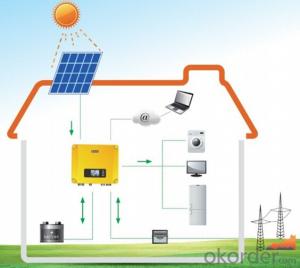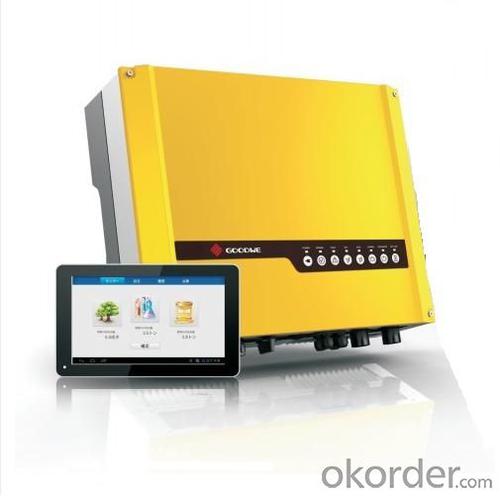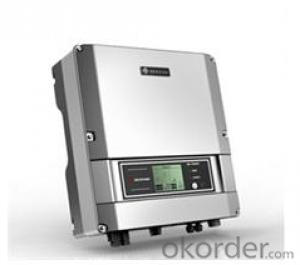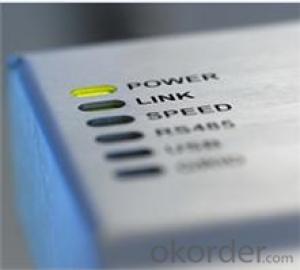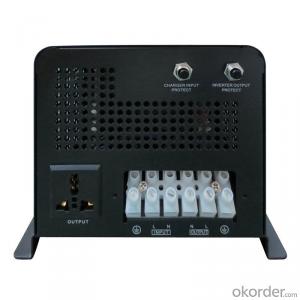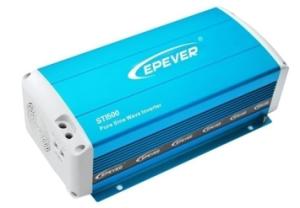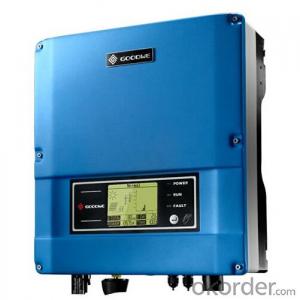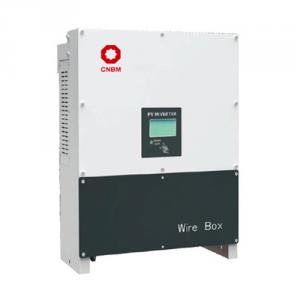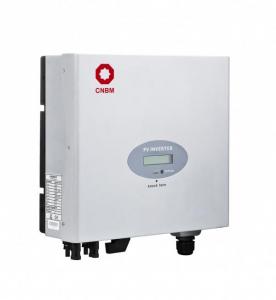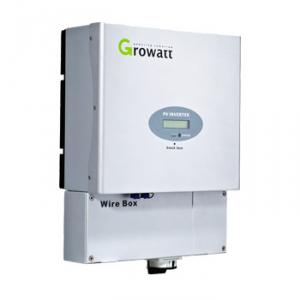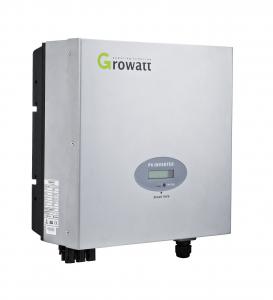Victron Solar Inverter Hybrid GW5048D-ES
OKorder Service Pledge
OKorder Financial Service
You Might Also Like
GW5048D-ES series bidirectional energy-storage inverter is applicable for both on-grid and off-grid PV systems and can control the flow of energy hybrid with its working situation able to be switched automatically or manually. During the day time, the PV plant generates electricity which can be provided to the loads, fed into the grids or charged the battery. The power stored can be released when the loads require it during the night. Additionally, power grid can also charge the storage devices via the inverter..
Datasheet
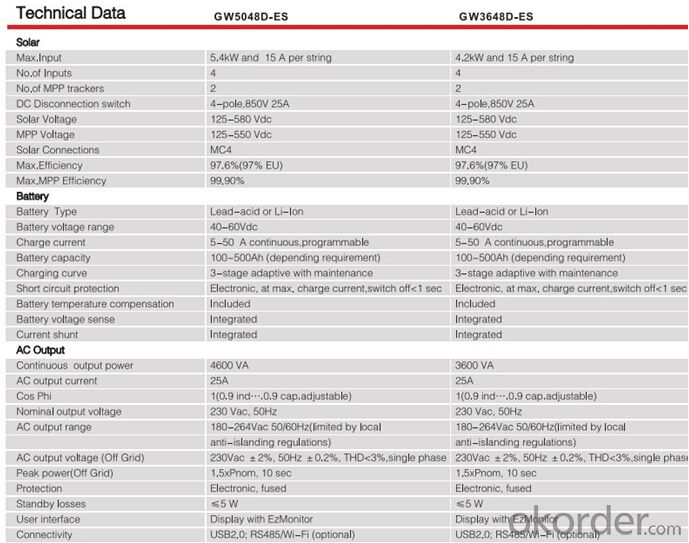
- Q: How does a solar inverter handle harmonics in the grid?
- A solar inverter handles harmonics in the grid by incorporating filters and control algorithms that mitigate the impact of harmonics. These filters help in reducing the distortion caused by harmonics, ensuring that the solar inverter operates efficiently and does not introduce additional harmonics into the grid. The control algorithms continuously monitor the grid's harmonics and adjust the inverter's output accordingly to maintain compliance with the grid's harmonic standards.
- Q: What is the role of a power factor correction circuit in a solar inverter?
- The role of a power factor correction circuit in a solar inverter is to improve the power factor of the inverter, ensuring that the power drawn from the grid is used efficiently. By reducing the reactive power and bringing it closer to the real power, the power factor correction circuit helps minimize energy losses and optimize the overall performance of the solar inverter.
- Q: Grid-connected inverter is generally divided into photovoltaic power generation grid-connected inverter, wind power grid-connected inverter, power equipment and grid-connected inverter and other power generation equipment power generation inverter.
- Grid-connected inverter is generally used with large-scale photovoltaic power plant system, a lot of parallel PV string is connected to the same set of inverter DC input, the general power of the use of three-phase IGBT power module, power
- Q: What is the PV inverter starting voltage
- sine wave becomes narrower and the voltage width in the center of the sine wave is widened and the switching element is always operated in a direction at a certain frequency in a half cycle, A pulse wave train (pseudo sine wave). Then let the pulse wave form a sine wave through a simple filter
- Q: What is the role of a solar inverter in a residential system?
- The role of a solar inverter in a residential system is to convert the direct current (DC) electricity produced by solar panels into alternating current (AC) electricity that can be used to power household appliances and be fed back into the grid if there is excess energy. Additionally, the inverter ensures the efficiency and safety of the system by monitoring and regulating the flow of electricity.
- Q: What certifications should I look for when choosing a solar inverter?
- When choosing a solar inverter, it is important to look for certifications such as UL 1741, which ensures the inverter meets safety and performance standards. Additionally, certifications like IEEE 1547 and IEC 61727 validate the inverter's compliance with grid interconnection requirements.
- Q: Are there any government incentives for installing solar inverters?
- Yes, there are government incentives for installing solar inverters. In many countries, governments offer tax credits, rebates, grants, and other financial incentives to promote the adoption of renewable energy technologies, including solar inverters. These incentives aim to reduce the upfront costs of installation and make solar energy more affordable and accessible to individuals and businesses.
- Q: How does a solar inverter handle power quality issues in the grid?
- A solar inverter helps to handle power quality issues in the grid by continuously monitoring the voltage and frequency of the grid. If it detects any variations or deviations from the standard levels, it adjusts its own output accordingly to maintain a stable and reliable power supply. Additionally, some advanced solar inverters also incorporate features like power factor correction and voltage regulation to further enhance power quality and ensure efficient utilization of the solar energy generated.
- Q: What are the common fault indications in a solar inverter?
- Common fault indications in a solar inverter can include error messages on the display panel, blinking lights, sudden shutdowns or restarts, abnormal noise, overheating, and fluctuations in power output.
- Q: Can a solar inverter be used with different types of communication interfaces?
- Yes, a solar inverter can be used with different types of communication interfaces. Many modern solar inverters are designed to be compatible with various communication protocols such as Wi-Fi, Ethernet, RS485, and Zigbee. This allows for easy integration and monitoring of the inverter with different types of communication systems and devices.
Send your message to us
Victron Solar Inverter Hybrid GW5048D-ES
OKorder Service Pledge
OKorder Financial Service
Similar products
Hot products
Hot Searches
Related keywords

